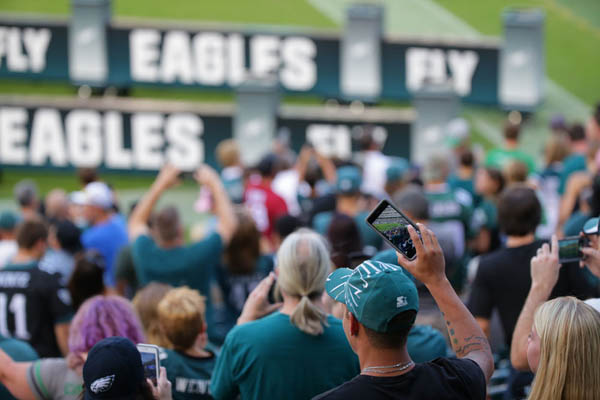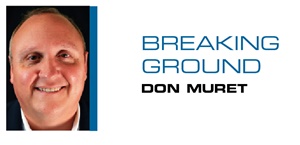Panasonic Enterprise Solutions is marketing a customized Wi-Fi system for sports facilities that stands apart from its peers, requiring fewer access points while providing greater connectivity for mobile devices, company officials said.
The system, called Everest Network Solution, is in place at Lincoln Financial Field, home of the Philadelphia Eagles, where Panasonic is a founding partner and produced the stadium’s video boards.
Separately, the Florida Panthers are in the midst of installing Everest at BB&T Center in suburban Fort Lauderdale. Hurricane Irma set back installation by three weeks, said John Spade, the team’s chief technology officer.
The electronics giant officially brought the system to market in April after two years of development, which included a five-game beta test with the Eagles last fall, said Danny Abelson, Panasonic’s vice president of connectivity. Abelson is a veteran sound engineer who cut his teeth in the concert industry before expanding into technology tied to arenas and stadiums.
Everest is the first Wi-Fi system designed specifically for sports venues from the ground up, according to Abelson. To date, most Wi-Fi installations in sports are modeled after networks developed for office buildings, where there is typically coverage for devices distributed every 150 feet. Arenas and stadiums, though, are much larger buildings with up to 10 times the number of devices in use. As a result, Abelson said, technology providers overcompensate by installing several hundred access points, which are essentially antennas, for venues with devices distributed every 4 feet.
 |
The Panasonic system is in its first year at Lincoln Financial Field.
Courtesy of: PHILADELPHIA EAGLES |
The cost to install Panasonic’s system runs about the same as that of its competitors, $7 million to $9 million for stadiums and $2 million to $3 million for arenas, but with fewer pieces of equipment involved, the construction costs run about 25 percent less than other networks, Abelson said.
Everest’s model, using proprietary technology, relies on fewer and more powerful access points connecting users to the Wi-Fi network. They’re equipped with greater technology, essentially doubling the number of radio resources to optimize coverage compared with other systems, Abelson said.
There’s another important distinction, he said. Everest’s access points are mounted on a stadium’s steel and concrete columns, and for arenas, the catwalks along the roof line. Other systems depend on drilling holes under seats to run the cabling as part of the facility’s wireless infrastructure.
“The biggest issue for us was drilling all those holes under seats … and it got us to thinking, ‘What else is out there?’” said John Pawling, the Eagles’ vice president of information technology. “You start drilling holes through the roof of seating sections below and run the risk of water leaks.”
After winning the Eagles’ proposal, Panasonic Enterprise Solutions installed about 650 access points, which is actually a higher number than the old network, but coverage now extends to smoking areas, the service level and the 110,000-square-foot fan plaza inside the north gate, Pawling said.
By comparison, other NFL stadiums have more than 1,200 access points covering largely the same amount of square footage.
In Philly, the first test with the entire system operating for a full house came Sept. 24 for the Eagles’ regular-season home opener against the Giants. Pawling said there were 21,963 concurrent Wi-Fi users, beating the record of 20,309 users during last year’s home game against the Cowboys.
The amount of data transferred showed for the Giants game measured 4.43 terabytes, doubling last year’s numbers for an Eagles game and surpassing the record of 3 terabytes for this past summer’s U2 concert.
“We’ll monitor those numbers as the season goes on to make sure we have enough bandwidth,” he said. “But overall, the system exceeded our expectations in every way.”
Don Muret can be reached at dmuret@sportsbusinessjournal.com. Follow him on Twitter @breakground.





